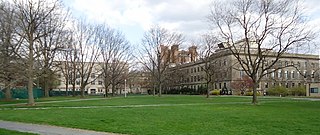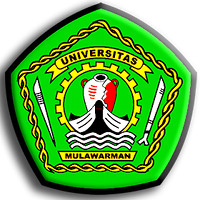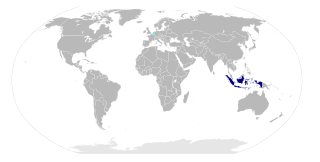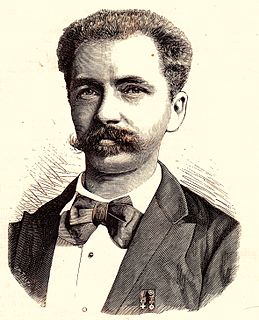
The New York State College of Agriculture and Life Sciences is a statutory college established and supervised by the State University of New York (SUNY) system. CALS is located on the campus of Cornell University in Ithaca, New York. With enrollment of approximately 3,100 undergraduate and 1,000 graduate students, CALS is the third-largest college of its kind in the United States and the second-largest undergraduate college on the Cornell campus.

The Bandung Institute of Technology or Institute of Technology, Bandung is a state, coeducational research university located in Bandung, Indonesia. Established in 1920, ITB is the oldest technology-oriented university in Indonesia.

Gadjah Mada University is a public research university located in Yogyakarta, Special Region of Yogyakarta, Indonesia. Officially founded on 19 December 1949, Gadjah Mada University is one of the oldest and largest institutions of higher education in the country. It has been credited as one of the most prestigious universities in Indonesia, along with the Bandung Institute of Technology and the University of Indonesia.

University Putra Malaysia is recognised by the independent government assessments as one of Malaysia's leading research universities offering undergraduate and postgraduate courses with a focus on agricultural sciences and its related fields. Founded in 1931 as the School of Agriculture, UPM's main campus is in Serdang, Selangor. It was formerly known as Universiti Pertanian Malaysia or the Agricultural University of Malaysia. Now, UPM offers a wide range of undergraduate and postgraduate programmes in most fields such as science, engineering, medicine, veterinary medicine, business and social science.It was ranked as the joint 229th best university in the world in 2017 by Quacquarelli Symonds. and it was ranked 36th in Best Asian Universities and the 2nd best university in Malaysia.

Syarif Hidayatullah State Islamic University Jakarta is a public university in Indonesia. It is in Ciputat, South Tangerang, Banten, district in southern Jakarta.

Wrocław University of Environmental and Life Sciences – a public higher education institution founded in 1951. One of the best career-oriented universities in Poland, it ranks as the country’s second biggest patent licensor as well as the second best life-sciences and agricultural university.
Chonbuk National University is a national research university founded in 1947, located in Jeonju, Republic of Korea. As the flagship national university for the Jeollabuk-do province, Chonbuk National University has been ranked 501–550th in the world by QS Top Universities Ranking in 2016.

The University of Veterinary and Animal Sciences, Lahore (initials:UVAS), is a public university located in Lahore, Punjab, Pakistan. It is accredited by the Pakistan Veterinary Medical Council (PVMC). It has additional teaching campuses in rural areas of the Punjab, Pattoki and Jhang.

The College of Biological Sciences (CBS) is one of seven freshman-admitting colleges at the University of Minnesota. Established in 1869 as the College of Sciences, the College of Biological Sciences is now located on both the Minneapolis Campus and the St. Paul Campus. CBS is a college that focuses its undergraduate and graduate attention towards research. The dean is Valery E. Forbes. The Associate Dean for Graduate Education is Carrie Wilmot, the Associate Dean for Undergraduate Education is John Ward, the Associate Dean for Research is David Greenstein, and the Associate Dean for Faculty is Marlene Zuk.

Sokoine University of Agriculture (SUA) is a public university in Morogoro, Tanzania, specializing in agriculture. The university is named after the country's second prime minister Edward Sokoine.

The University of Florida College of Agricultural and Life Sciences (CALS), founded in 1964, is a college of the University of Florida.

Brawijaya University was established in 5 January 1963 and located in Malang. It is an autonomous state university in Indonesia. Brawijaya is recognized as one of the elite campuses in Indonesia and consistently ranked 5th in national level by official release from Kemenristekdikti alongside with University of Indonesia (UI), Bogor Agricultural University (IPB), Gadjah Mada University (UGM), and Bandung Institute of Technology (ITB). In International level, UB ranked 51st in Asia and 400th Worldwide, thus made UB as one of few Indonesian universities which indexed by QS World University Rankings.

The Universitas Mulawarman is a public university located in Samarinda, East Kalimantan, Indonesia. It was established on September 27, 1962, making it the oldest tertiary education institution in East Kalimantan. With more than 35,000 students, Universitas Mulawarman is the university with the most students in Kalimantan. Its main campus is in Gunung Kelua, while other campuses are in Pahlawan Road, Banggeris Street and Flores Street of Samarinda.

Vietnam National University of Agriculture, until 2014 Hanoi University of Agriculture (HUA), is an education and research university specializing in the agricultural sector. The university is located in Trau Quy town, Gia Lam district, a Hanoi suburban area, about 12 km far from Hanoi city centre.

Ar-Raniry State Islamic University Banda Aceh (Bahasa Indonesia: Universitas Islam Negeri Ar-Raniry Banda Aceh, is a public university in Banda Aceh, Aceh Province, Indonesia. The University is run under the auspices of the Ministry of Religious Affairs of the Republic of Indonesia.

University of Bangka Belitung is a public university in Bangka Belitung province, Indonesia. Located just outside the provincial capital of Pangkal Pinang in the Merawang subdistrict of Bangka Regency, it is the only public university in the province.

Teuku Umar University is an Indonesian public university in Meulaboh, West Aceh Regency. Starting from a foundation in 1984, it became a university in 2006 and was nationalized to form the current public university in 2014.






















